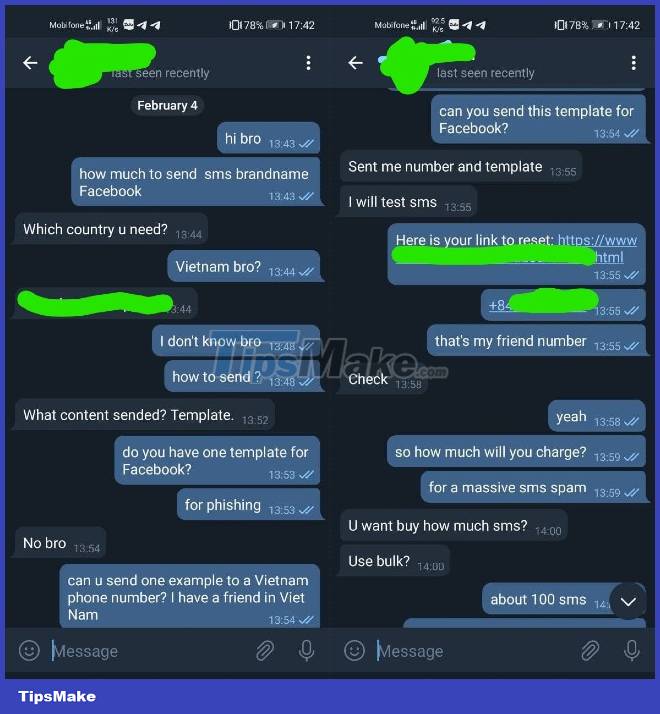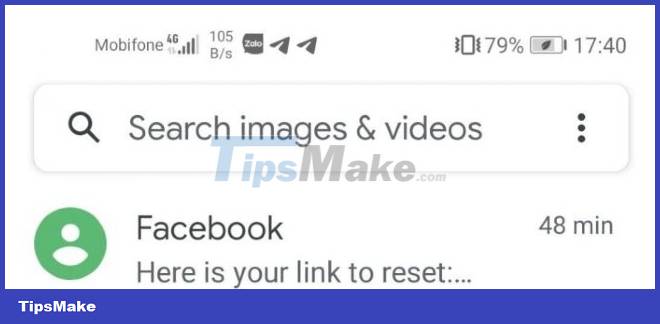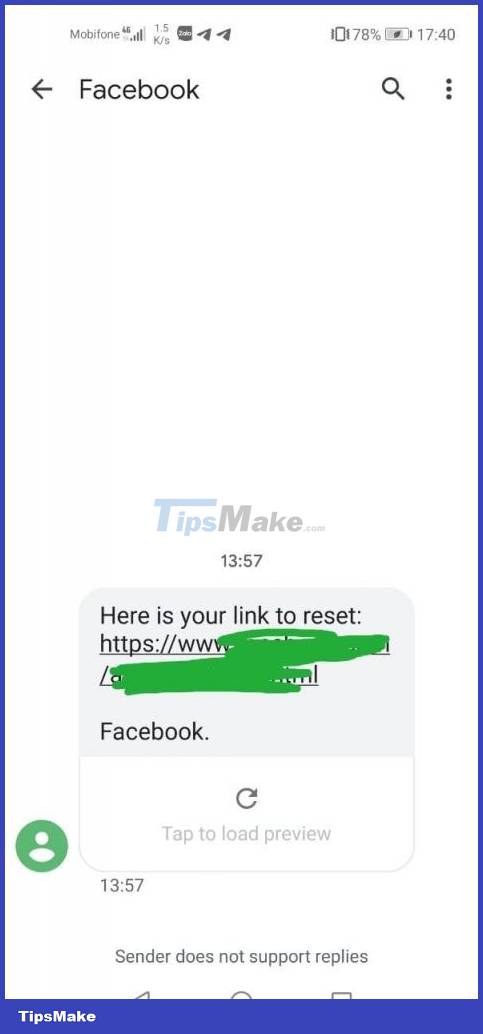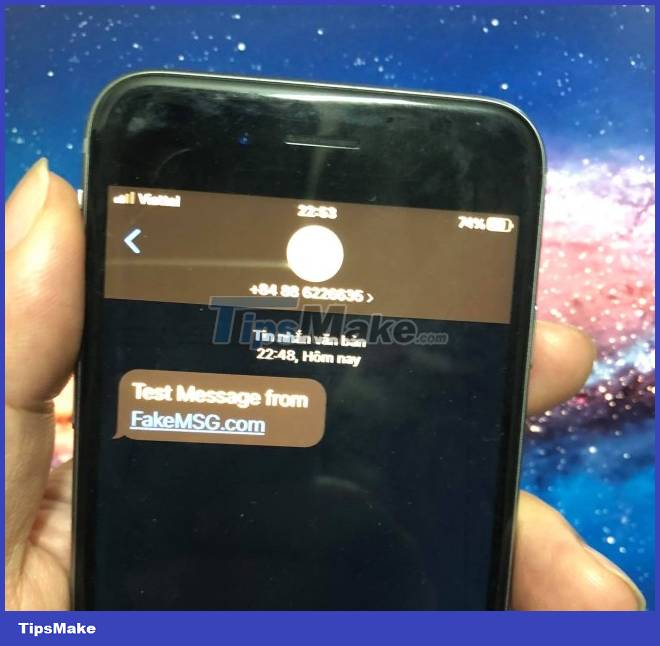What is SMS Brandname? How do criminals send fraudulent messages via SMS Brandname?
Recently, scams via SMS Brandname messages from banks have appeared rampant. So what is SMS Brandname? Why can criminals send fraudulent messages using SMS Brandname? We invite you to join TipsMake.com to find out.
What is SMS Brandname?
SMS Brandname is a service provided by network operators for businesses that need to send SMS messages to customers, for advertising or customer care purposes. When using this service, the sender information in the SMS will display the brand/product/brand name instead of the phone number.
When registering an SMS Brandname, businesses will have to prepare documents including Business Registration Certificate/Establishment Decision/Brand Copyright Certificate/Decision to grant a Certificate of Protection to the Trademark/Certificate of Ownership. Intellectual property or equivalent documents are still valid. In addition, businesses must also prepare a Brandnam registration document according to the network operator's form.
Why can criminals send fraudulent messages using SMS Brandname?
As you can see, the SMS Brandname registration process is quite complicated and each SMS Brandname is unique so cybercriminals cannot register it forged. So how do they send fraudulent messages using SMS Brandname?
The answer is SMS Fake Sender ID.
Fake Sender ID SMS service is not new. In the past, cybercriminals have used this service to fake messages from Apple to take over users' iCloud accounts. To use fake SMS Sender ID, cybercriminals must pay rent to those who provide this service in the Darkweb underground world.

According to cyber security expert Ngo Minh Hieu of NCSC (once known by the nickname hacker hieupc), on the Darkweb market, Fake Sender ID SMS service costs from 100-500USD depending on the quality and quantity of SMS to be sent.


To prove it, hieupc contacted a person selling Fake Sender ID SMS service in a closed group on Telegram. To confirm his reputation, Hieu asked the seller to try sending an SMS message with the Brandname Facebook to his account number.
After just one minute, Hieu's phone number received a message from Facebook with the content that Hieu provided to the other person. If you want to send 100 Brandname SMS, Hieu will have to pay the other person 20 USD in Bitcoin.

Searching with the keyword SMS Fake Sender ID on Google TipsMake.com also easily finds many websites providing this service. We tried sending messages for testing purposes and it was successful. However, the prices these websites offer are much higher than the Darkweb market.

Thus, with the support of hackers in the underground world, cyber criminals can easily send SMS messages with any Brandname.
To ensure safety, cybersecurity expert Ngo Minh Hieu advises users to pay attention to the following issues:
- Absolutely do not access links or links in strange or unknown messages/emails.
- Only log in to the e-banking service through the official website of the bank you are using, you can contact the bank switchboard to get official site information.
- Limit the use of public computers and public wireless networks when accessing the electronic banking system.
- Do not provide your name, online banking login password, OTP authentication code, bank card number via phone, email, social networks and websites.
- Set a password that is difficult to guess, change your password regularly or when suspected of being exposed. Do not use password saving features for automatic login, do not use the same password to log in to online banking and email passwords or login passwords to social networks.
- Sign up to receive transaction balance change notifications.
- Register to use Smart OTP authentication method when transacting online. Use 2-layer security for social network accounts, email.
You should read it
- What to do when Skype video doesn't work?
- Learn about Krita - Free alternative to GIMP
- How to view battery life on iOS 12
- Toshiba introduces a Core i3 touchscreen laptop
- New printing solution with Google Cloud Print
- Free antivirus software is better than the paid one
- 7 ways hackers steal your identity on social networks
- How to Optimize Windows Vista
May be interested
- How to send messages to multiple contact numbers on iPhone
 to send messages and content to multiple numbers on the iphone, we can use siri shortcuts or third-party apps. this is a guide for sending specific messages to many people on your iphone.
to send messages and content to multiple numbers on the iphone, we can use siri shortcuts or third-party apps. this is a guide for sending specific messages to many people on your iphone. - How to Send Anonymous Messages
 communicating in today's increasingly virtual community has two sides: interesting and easily boring. although most people prefer anonymity, it is not easy to maintain it. there are many different ways to text anonymously. let's read the article below to discover how to send anonymous messages.
communicating in today's increasingly virtual community has two sides: interesting and easily boring. although most people prefer anonymity, it is not easy to maintain it. there are many different ways to text anonymously. let's read the article below to discover how to send anonymous messages. - Instructions for sending handwriting messages on iOS 10
 the new function handwritten messages on imessgae ios 10 is a very interesting feature. we can create our own typography, or based on the handwriting patterns available to compose messages.
the new function handwritten messages on imessgae ios 10 is a very interesting feature. we can create our own typography, or based on the handwriting patterns available to compose messages. - How to send Instagram messages on your computer
 to send instagram messages on a computer, users need to use some support utilities.
to send instagram messages on a computer, users need to use some support utilities. - How to send self-destruct messages on Nachricht.co
 nachricht.co will encrypt the message to send the secret message and self-destruct after closing the tab or browser.
nachricht.co will encrypt the message to send the secret message and self-destruct after closing the tab or browser. - How to send handwritten messages on iPhone - New feature updated on iMessage
 handwritten iphone messages can be sent via the messages app to other apple users without the need for any supporting apps.
handwritten iphone messages can be sent via the messages app to other apple users without the need for any supporting apps. - What is an MMS? Different from SMS? How much does it cost to send MMS messages?
 in the past, we did not have modern image and data transmission tools like now, at that time we only had mms to transmit that data. in this article we will learn about what is mms? different from sms? how much does it cost to send mms messages?
in the past, we did not have modern image and data transmission tools like now, at that time we only had mms to transmit that data. in this article we will learn about what is mms? different from sms? how much does it cost to send mms messages? - How to Send Messages on Instagram
 this article will show you how to send direct messages to instagram users. you can use instagram direct or go to someone's profile to send them a message, but you can't send a message directly from your computer.
this article will show you how to send direct messages to instagram users. you can use instagram direct or go to someone's profile to send them a message, but you can't send a message directly from your computer. - Android users were able to send messages from the computer browser
 tipsmake - to send and receive messages through the browser, simply visit https://messages.android.com and scan the qr code.
tipsmake - to send and receive messages through the browser, simply visit https://messages.android.com and scan the qr code. - How to Send Video on Apple Messages
 to send a video in messages for ios, open a conversation → tap the camera icon → select a video from the gallery → tap the 'send' icon. open the messages app. if you want to send a video that's already on your device, you can select it from...
to send a video in messages for ios, open a conversation → tap the camera icon → select a video from the gallery → tap the 'send' icon. open the messages app. if you want to send a video that's already on your device, you can select it from...










 How to use BCC in Outlook
How to use BCC in Outlook 5 ways to add an image to another image
5 ways to add an image to another image Avast Secure Browser: Chromium-based browser for secure web surfing
Avast Secure Browser: Chromium-based browser for secure web surfing List of 203 money-stealing applications that iPhone and Android users should urgently delete
List of 203 money-stealing applications that iPhone and Android users should urgently delete How to activate the Dragon 2024 theme on Microsoft Edge
How to activate the Dragon 2024 theme on Microsoft Edge Death Stranding is officially available on iOS, configuration, price
Death Stranding is officially available on iOS, configuration, price